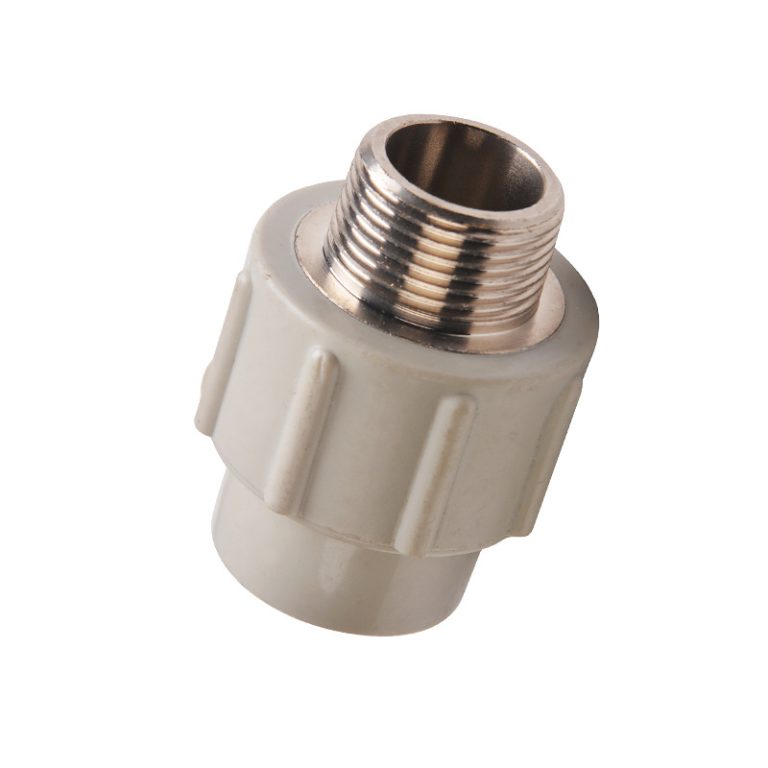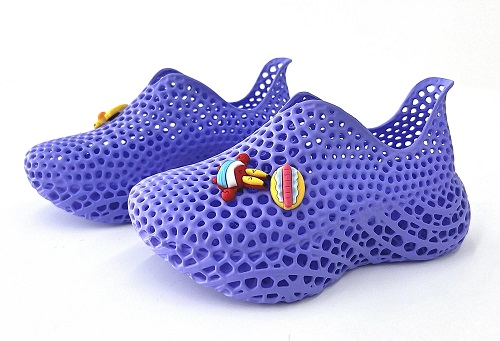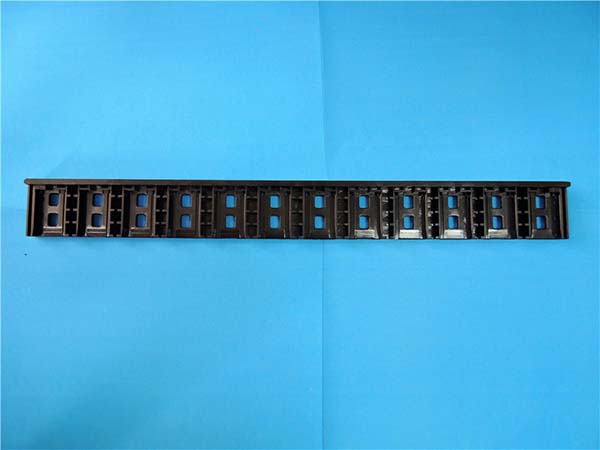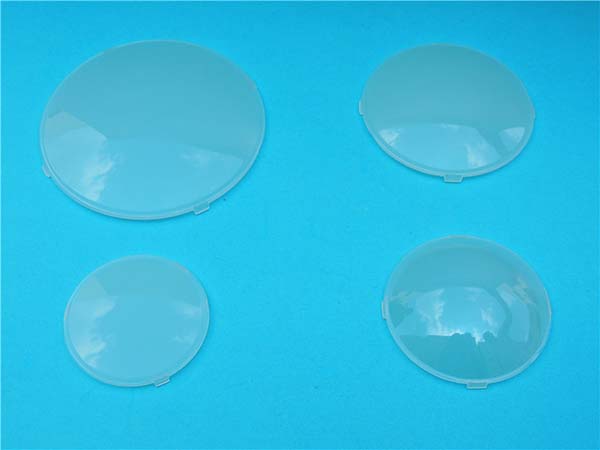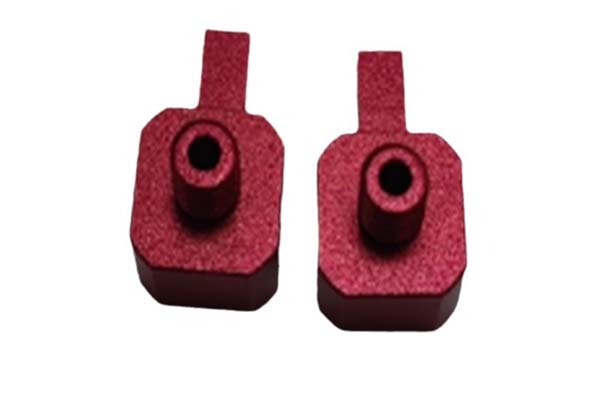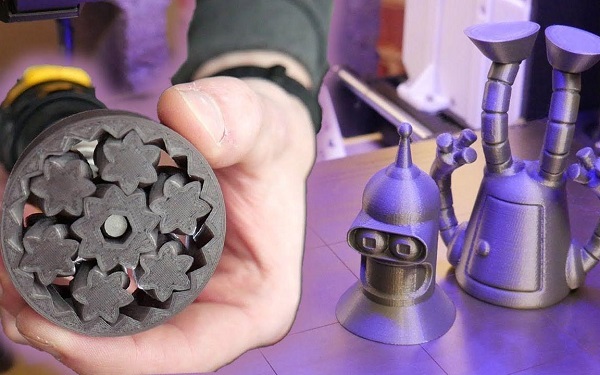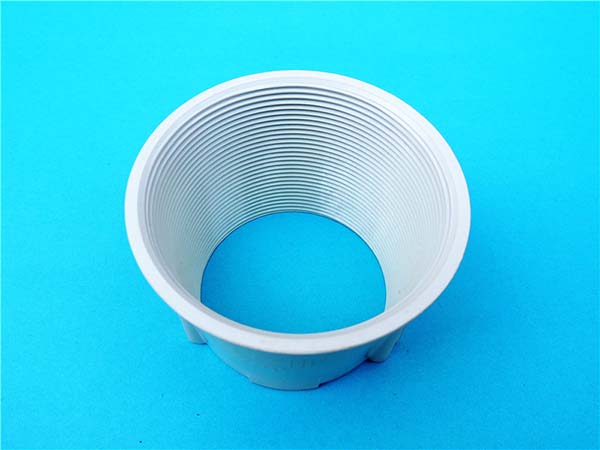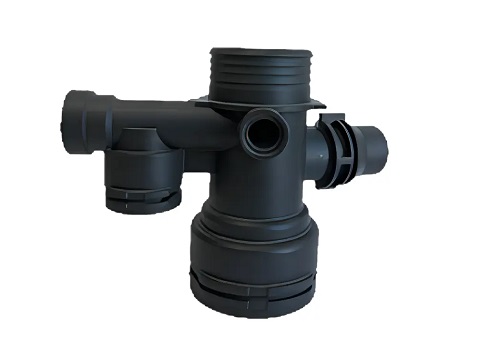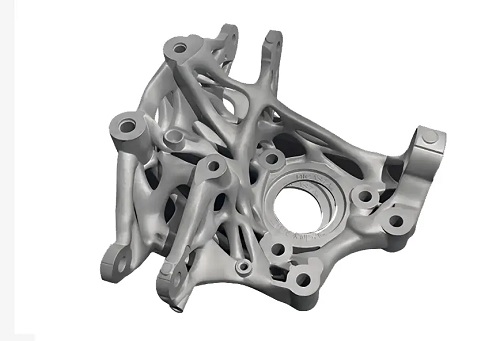1. Introduction
In the ever - evolving landscape of manufacturing, Metal 3D Printing has emerged as a technology that is not just a novelty but a game - changer. It represents a radical departure from traditional manufacturing methods, opening up new possibilities and redefining what is achievable in the production of metal components.
The concept of 3D printing, also known as additive manufacturing, has been around for several decades. However, the advent of Metal 3D Printing has added a new dimension to this technology. While early 3D printing was mostly associated with plastics and used mainly for prototyping, Metal 3D Printing has extended the application scope to high - value industries such as aerospace, automotive, healthcare, and tooling.
The basic principle of Metal 3D Printing is to build a three - dimensional object layer by layer from a digital model. This is in contrast to traditional subtractive manufacturing methods, where material is removed from a larger block to create the desired shape. For Yigu Technology example, in machining, a metal part is carved out of a solid billet, which often results in a significant amount of material waste. In Metal 3D Printing, the material is precisely added where it is needed, leading to better material utilization.
2. Working Principles of Metal 3D Printing
2.1 Powder Bed Fusion Process
The Powder Bed Fusion process is one of the most common and well - developed metal 3D printing techniques. It encompasses methods such as Direct Metal Laser Sintering (DMLS) and Electron Beam Melting (EBM).
The following Yigu Technology table summarizes the key differences between DMLS and EBM:
| Parameter | Direct Metal Laser Sintering (DMLS) | Electron Beam Melting (EBM) |
| Heat Source | Laser | Electron Beam |
| Operating Environment | Inert gas - filled chamber (to prevent oxidation) | High - vacuum chamber |
| Energy Density | Relatively lower compared to EBM | High, can melt high - melting - point metals easily |
| Part Accuracy | High, can achieve fine details | High, but may have slightly less fine - feature resolution in some cases |
| Build Speed | Generally slower due to the relatively lower energy density | Faster in some cases, especially for larger - scale parts |
| Material Compatibility | Wide range of metals, including stainless steel, aluminum alloys, etc. | Limited mainly to metals that are electrically conductive, with a focus on titanium alloys |
The working flow of the Powder Bed Fusion process can be illustrated in the following diagram:
- Powder Spreading: A recoater blade or roller spreads a thin layer of metal powder across the build platform.
- Energy Application: The laser (in DMLS) or electron beam (in EBM) scans the powder layer, fusing or melting the powder according to the part's cross - section.
- Layer Completion: Once a layer is completed, the build platform is lowered, and the process repeats from step 1 until the entire part is built.
- Post - processing: After printing, the part is removed from the powder bed, and post - processing steps such as support removal, heat treatment, and surface finishing are carried out.
2.2 Binder Jetting
Binder Jetting is another significant metal 3D printing technology. The working principle of Binder Jetting is different from Powder Bed Fusion. In this process, a liquid binder is selectively deposited onto a bed of metal powder.
The process starts with a powder - spreading mechanism that distributes a uniform layer of metal powder across a build area. Then, a printhead, similar to that of an inkjet printer, moves across the powder bed. The printhead deposits a liquid binder in the areas corresponding to the cross - sectional shape of the part as defined by the 3D model. The binder acts as a glue, binding the metal powder particles together in the desired pattern. This forms a green part, which is a semi - solid object composed of metal powder held together by the binder.
After the green part is built layer by layer, it undergoes a series of post - processing steps. First, the green part is removed from the powder bed, and the excess loose powder is removed. Then, it goes through a debinding process. Debinding is the removal of the binder material from the green part. This can be done through methods such as thermal debinding, where the part is heated to a specific temperature to burn off the binder, or solvent debinding, where a solvent is used to dissolve the binder.
After debinding, the part is in a porous state and has relatively low strength. To increase its strength and density, the part is sintered. Sintering involves heating the part to a temperature below its melting point but high enough to cause the metal particles to bond together through diffusion, similar to the sintering process in DMLS. The sintered part has a higher density and mechanical strength and is close to the final product.
Binder Jetting is suitable for a wide range of applications, especially in the production of complex - shaped parts where the ability to print without support structures (since the surrounding powder provides support during printing) is an advantage. It is also used in the manufacturing of metal molds, cores for casting, and small - batch production of metal components in industries such as automotive, jewelry, and dental.
2.3 Direct Energy Deposition (DED)
Direct Energy Deposition (DED) is a metal 3D printing technology that involves the deposition of metal material (in the form of powder or wire) directly into a high - energy heat source, such as a laser beam, electron beam, or plasma arc.
When using powder - based DED, a powder delivery system is used to inject metal powder into the path of the high - energy beam. The heat source melts the powder as it is being deposited, and the molten metal fuses with the previously deposited layers to build the 3D part layer by layer. In wire - based DED, a metal wire is fed into the heat source, where it is melted and deposited.
One of the key advantages of DED is its ability to build large - scale parts. Since the deposition process is not limited by a powder bed, DED can be used to manufacture parts with large dimensions. It is also suitable for repairing damaged metal components. For Yigu Technology example, in the aerospace industry, DED can be used to repair turbine blades. The damaged area is first cleaned, and then new metal is deposited using DED to restore the blade's shape and functionality.
Another application of DED is in the creation of parts with graded materials. By controlling the powder delivery system, different types of metal powders can be mixed and deposited in a specific pattern, creating a part with varying material properties. This is useful in applications where a part needs to have different mechanical or chemical properties in different regions, such as in some high - performance engine components.
However, DED also has some limitations. The surface finish of parts produced by DED is generally rougher compared to parts made by Powder Bed Fusion processes. This is because the deposition process can result in irregularities on the surface. Therefore, parts produced by DED often require additional post - processing, such as machining, to achieve the desired surface finish and dimensional accuracy.
2.4 Material Extrusion in Metal 3D Printing
Material Extrusion in metal 3D printing is an emerging technology that aims to bring the simplicity and low - cost advantages of plastic extrusion - based 3D printing to metal manufacturing.
The basic working principle of material extrusion in metal 3D printing involves using a filament that contains metal particles. These filaments are typically made by mixing metal powder with a polymer binder to form a composite material. The filament is then fed into a heated extrusion nozzle, similar to a traditional Fused Deposition Modeling (FDM) 3D printer.
As the filament enters the heated nozzle, the polymer binder melts, allowing the composite material to be extruded through the nozzle in a controlled manner. The extruded material is deposited layer by layer on a build platform according to the 3D model. After the part is printed, it goes through a series of post - processing steps. First, the part is placed in a solvent bath or heated to remove the polymer binder, leaving behind a porous metal part. This process is called debinding. Then, the porous metal part is sintered to increase its density and strength, similar to the post - processing steps in Binder Jetting.
One of the main advantages of material extrusion in metal 3D printing is its relatively low cost. The equipment required for this process is often more affordable compared to other metal 3D printing technologies, making it accessible to small - and medium - sized enterprises, educational institutions, and hobbyists. It also allows for easy and quick prototyping of metal parts.
However, this technology also has some drawbacks. The mechanical properties of parts produced by material extrusion in metal 3D printing are generally lower than those made by more established metal 3D printing methods such as Powder Bed Fusion. This is due to the relatively high porosity that can remain in the part even after sintering, and the limitations in the distribution of metal particles within the composite filament. Additionally, the maximum size of parts that can be printed is often limited by the size of the 3D printer's build volume and the stability of the extruded layers during printing.
4. Applications of Metal 3D Printing in Different Manufacturing Sectors
4.1 Aerospace Industry
The aerospace industry has been at the forefront of adopting Metal 3D Printing technology, and for good reason. The demand for high - performance, lightweight components in aircraft and spacecraft makes Metal 3D Printing an ideal solution.
One of the key applications is in the manufacturing of engine components. Turbine blades, for Yigu Technology example, are subjected to extreme temperatures and mechanical stresses. Traditional manufacturing methods often struggle to produce blades with complex cooling channels that are essential for maintaining the integrity of the blade under high - temperature operation. Metal 3D Printing allows for the creation of these intricate cooling channels within the blade structure. General Electric (GE) has been a pioneer in this area. GE uses Metal 3D Printing to produce fuel nozzles for its LEAP jet engines. These nozzles have a complex internal lattice structure that improves fuel atomization and combustion efficiency. The use of 3D - printed fuel nozzles has led to a 15% reduction in fuel consumption and a significant decrease in emissions, according to GE's research.
Lightweight structure design is another crucial aspect. In aerospace, reducing weight is directly related to improving fuel efficiency and increasing payload capacity. Metal 3D Printing enables the design and production of parts with optimized geometries, such as lattice - based structures. Airbus has used Metal 3D Printing to create brackets and other structural components with lattice designs. These components are up to 40% lighter than their conventionally manufactured counterparts while maintaining the required strength and stiffness.
Metal 3D Printing also plays a vital role in Component repair. In - flight, aircraft components can experience wear and tear or damage. Instead of replacing the entire component, which can be costly and time - consuming, Metal 3D Printing allows for the repair of damaged parts. For Yigu Technology example, if a turbine blade has a small crack or erosion, a 3D - printing process like Direct Energy Deposition can be used to deposit new metal onto the damaged area, restoring the blade's functionality. This not only reduces the cost of replacement parts but also minimizes aircraft downtime.
4.2 Automotive Industry
In the automotive industry, Metal 3D Printing is making significant inroads, driving innovation and efficiency improvements.
For Component manufacturing, Metal 3D Printing offers the ability to produce complex - shaped parts that are difficult to manufacture using traditional methods. For instance, engine components such as cylinder heads and intake manifolds can be designed with optimized internal flow channels. These channels can improve the combustion process, leading to better fuel efficiency and increased power output. A study by Ford found that 3D - printed intake manifolds can reduce the weight of the component by up to 30% while improving the engine's volumetric efficiency by 10 - 15%.
Customization is becoming an increasingly important factor in the automotive market, and Metal 3D Printing is well - suited to meet this demand. High - end and luxury car manufacturers are using 3D printing to create personalized parts for their customers. These can range from custom - designed interior components like gear knobs and dashboard inserts to exterior parts such as unique alloy wheels. McLaren, for example, offers 3D - printed interior trim pieces that can be customized with different textures, patterns, and even the customer's initials.
Yigu Technology Rapid prototyping is another area where Metal 3D Printing shines. In the automotive development process, being able to quickly produce and test prototypes is crucial. With Metal 3D Printing, a new design concept can be transformed into a physical prototype in a matter of days. This allows automotive engineers to rapidly iterate on their designs, reducing the overall development time of a new vehicle model. A report by Deloitte shows that automotive companies that use 3D Printing for prototyping can reduce the time from concept to production by up to 35%.
4.3 Medical Field
The medical field is experiencing a revolution with the application of Metal 3D Printing, especially in the areas of 植入物制造,手术器械定制,and 生物打印.
For Implant manufacturing, Metal 3D Printing enables the production of customized implants that are tailored to an individual patient's anatomy. In orthopedics, for example, 3D - printed titanium hip implants can be designed to match the exact shape of a patient's hip joint. This personalized fit improves the implant's stability and reduces the risk of implant failure. A study published in the Journal of Arthroplasty found that patients who received 3D - printed hip implants had a 20% lower risk of implant - related complications compared to those with traditional implants.
Customized surgical instruments is also made possible by Metal 3D Printing. Surgeons can now have surgical instruments that are designed specifically for a particular type of surgery or even for a specific patient. For complex surgeries such as craniofacial procedures, 3D - printed surgical guides can be created to help surgeons accurately position implants and perform bone cuts. These customized surgical guides can improve the precision of the surgery, leading to better patient outcomes.
Bioprinting, although still in its early stages, holds great promise. Metal 3D Printing is being explored as a way to create scaffolds for tissue engineering. These scaffolds can be designed to have a specific porosity and structure that promotes cell growth and tissue regeneration. For example, 3D - printed metal scaffolds can be used to support the growth of bone tissue in cases of large - scale bone defects.
4.4 Tool and Die Making
In tool and die making, Metal 3D Printing is revolutionizing the industry.
Manufacturing of complex mold structures is one of the main applications. Traditional manufacturing methods often face challenges when creating molds with complex internal channels or undercuts. Metal 3D Printing allows for the production of molds with conformal cooling channels. These channels follow the shape of the mold cavity, providing more efficient cooling during the injection molding or casting process. A study by the Society of Plastics Engineers found that molds with conformal cooling channels can reduce the cooling time by up to 40%, increasing the productivity of the molding process.
Mold repair is another significant advantage. When a die or mold is damaged, instead of replacing the entire expensive tool, Metal 3D Printing can be used to repair the damaged area. Direct Energy Deposition can be used to deposit new metal onto the worn - out or damaged parts of the mold, restoring its functionality. This not only saves the cost of a new mold but also reduces the downtime associated with mold replacement.
Rapid mold development is also made possible by Metal 3D Printing. For small - batch production or rapid prototyping of plastic parts, 3D - printed molds can be produced quickly. The design of the mold can be modified easily in the digital model, and a new mold can be printed in a short time, enabling faster product development cycles.
4.5 Other Industries
Metal 3D Printing also finds applications in other industries.
In the jewelry industry, it allows for the creation of highly detailed and complex jewelry designs. Designers can create unique pieces with intricate patterns and shapes that would be difficult to achieve with traditional casting methods. For example, 3D - printed gold and silver jewelry can have lattice - like structures that add a unique aesthetic appeal.
In Architecture, Metal 3D Printing is being explored for the production of architectural elements. Small - scale metal components for building facades or decorative elements can be 3D - printed with high precision. This enables architects to bring their innovative designs to life, creating unique and visually appealing buildings.
In Manufacturing of electronic products, Metal 3D Printing can be used to produce heat sinks with optimized geometries. These heat sinks can dissipate heat more effectively, improving the performance and lifespan of electronic devices such as smartphones, laptops, and servers.
5. Conclusion
Yigu Technology Metal 3D Printing has emerged as a revolutionary force in the manufacturing landscape, with the potential to reshape industries and drive innovation to new heights. As we have explored, this technology offers a multitude of advantages, from design freedom and reduced material waste to rapid prototyping and enhanced customization capabilities.
The applications of Yigu Technology Metal 3D Printing span across diverse sectors, including aerospace, automotive, medical, tool and die making, and beyond. In aerospace, it enables the production of lightweight, high - performance components that are crucial for fuel efficiency and improved flight performance. The automotive industry benefits from its ability to create complex parts, facilitate customization, and accelerate the product development cycle. In the medical field, Metal 3D Printing is changing the game by allowing for the production of personalized implants and surgical instruments, leading to better patient outcomes.
When compared to traditional manufacturing methods, Metal 3D Printing has its own set of unique characteristics. While traditional methods still hold an edge in high - volume production of simple parts, Metal 3D Printing shines in small - batch production, customization, and the creation of complex geometries. It also has the potential to reduce costs in certain scenarios, especially when considering tooling and material waste.
FAQs
Q1: What are the most common metals used in Metal 3D Printing?
A1: The most common metals used in Metal 3D Printing include stainless steel, titanium, aluminum, cobalt - chrome, and copper. Stainless steel is popular for its corrosion resistance and mechanical properties, making it suitable for a wide range of applications. Titanium is highly valued in aerospace and medical applications due to its high strength - to - weight ratio and biocompatibility. Aluminum is used for its lightweight properties, often in the automotive and aerospace industries. Cobalt - chrome is commonly used in dental and medical implants, and copper is used for its excellent electrical and thermal conductivity in applications like electronics.
Q2: How accurate are Metal 3D - printed parts?
A2: The accuracy of Metal 3D - printed parts depends on several factors, including the type of 3D printing technology used, the complexity of the part, and the post - processing steps. In general, modern Metal 3D printers can achieve an accuracy of ±0.1 - 0.2 mm for small - to medium - sized parts. Powder Bed Fusion processes like Direct Metal Laser Sintering (DMLS) can achieve high levels of accuracy, often with tolerances in the range of ±0.05 - 0.1 mm for well - optimized prints. However, for larger parts or those with very complex geometries, the accuracy may be slightly lower. Post - processing operations such as machining can further improve the dimensional accuracy of 3D - printed parts.
Q3: Can Metal 3D Printing replace traditional manufacturing methods completely?
A3: Metal 3D Printing is not likely to replace traditional manufacturing methods completely. While it offers significant advantages in certain areas, traditional manufacturing methods still have their own strengths. For high - volume production of simple parts, traditional methods such as injection molding, die - casting, and machining are often more cost - effective and faster. However, Metal 3D Printing is well - suited for applications where design complexity, customization, or small - batch production is required. In the future, a combination of both Metal 3D Printing and traditional manufacturing methods is likely to be the norm, with each method being used for the applications where it is most efficient.
